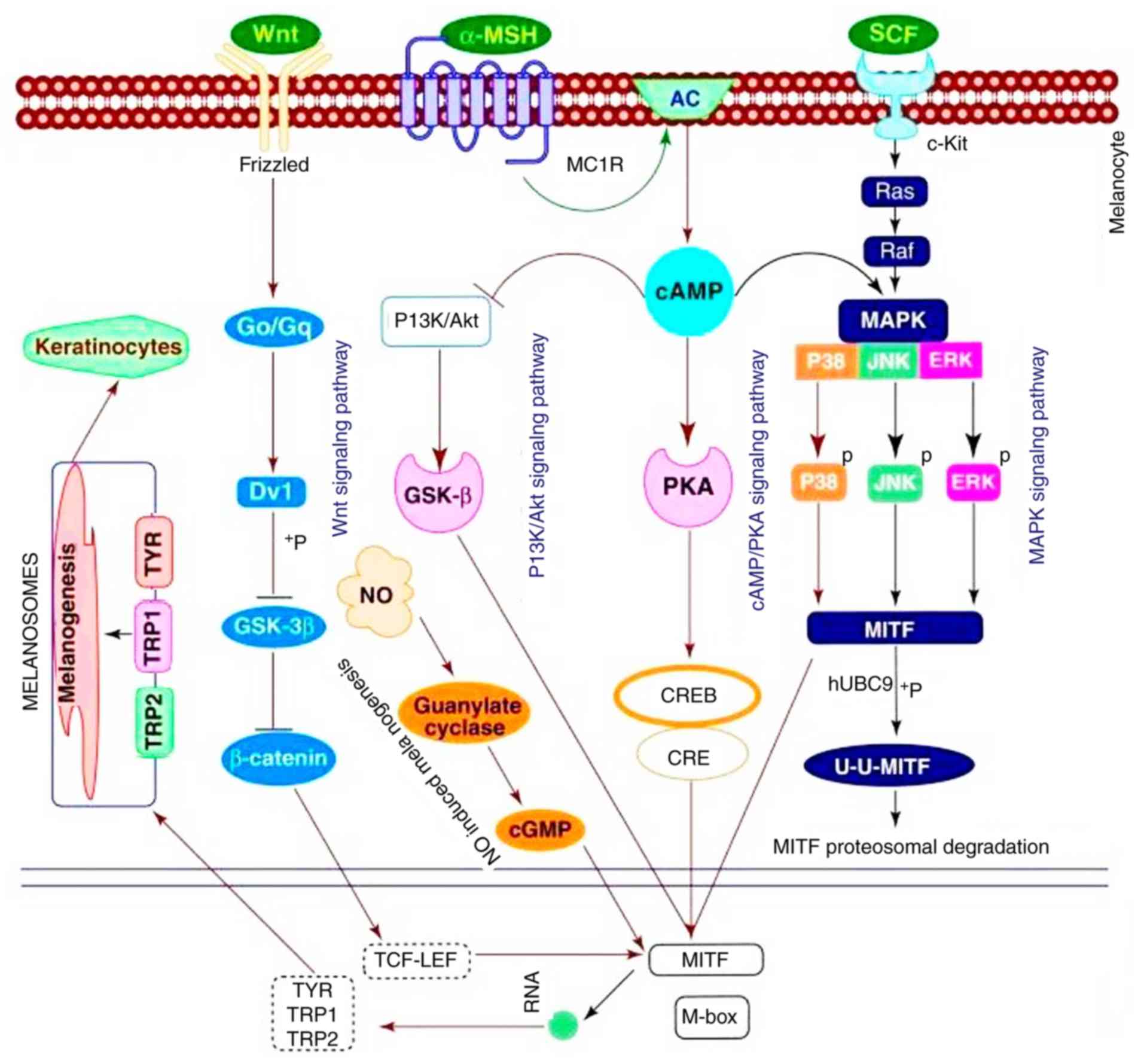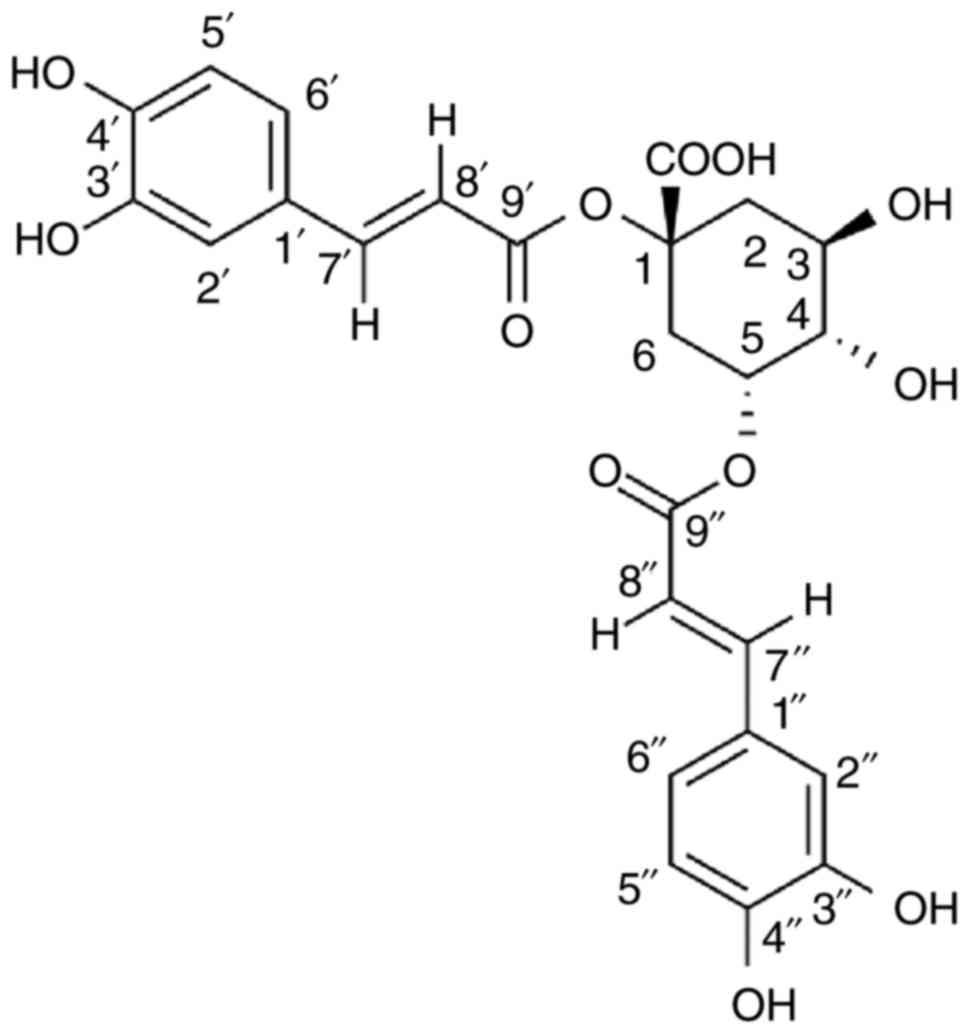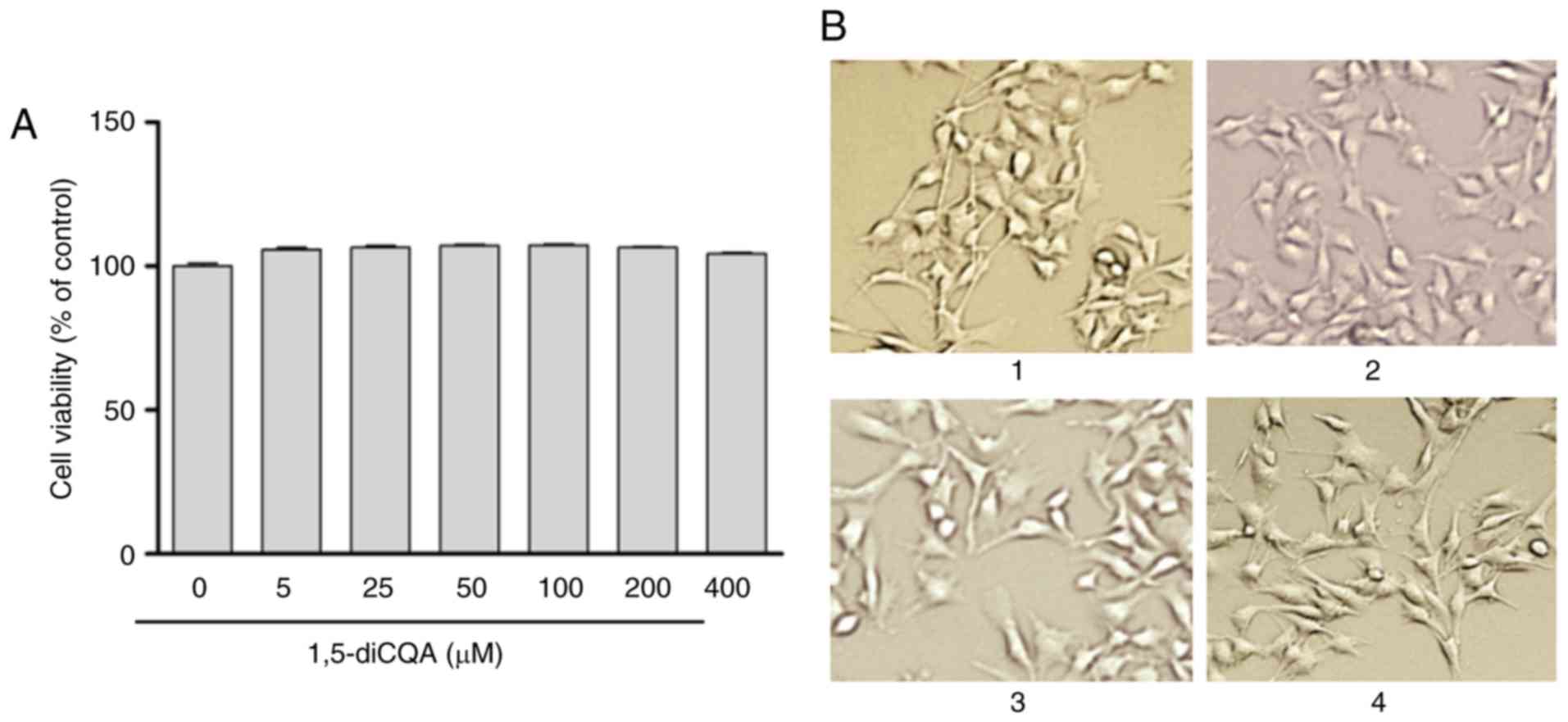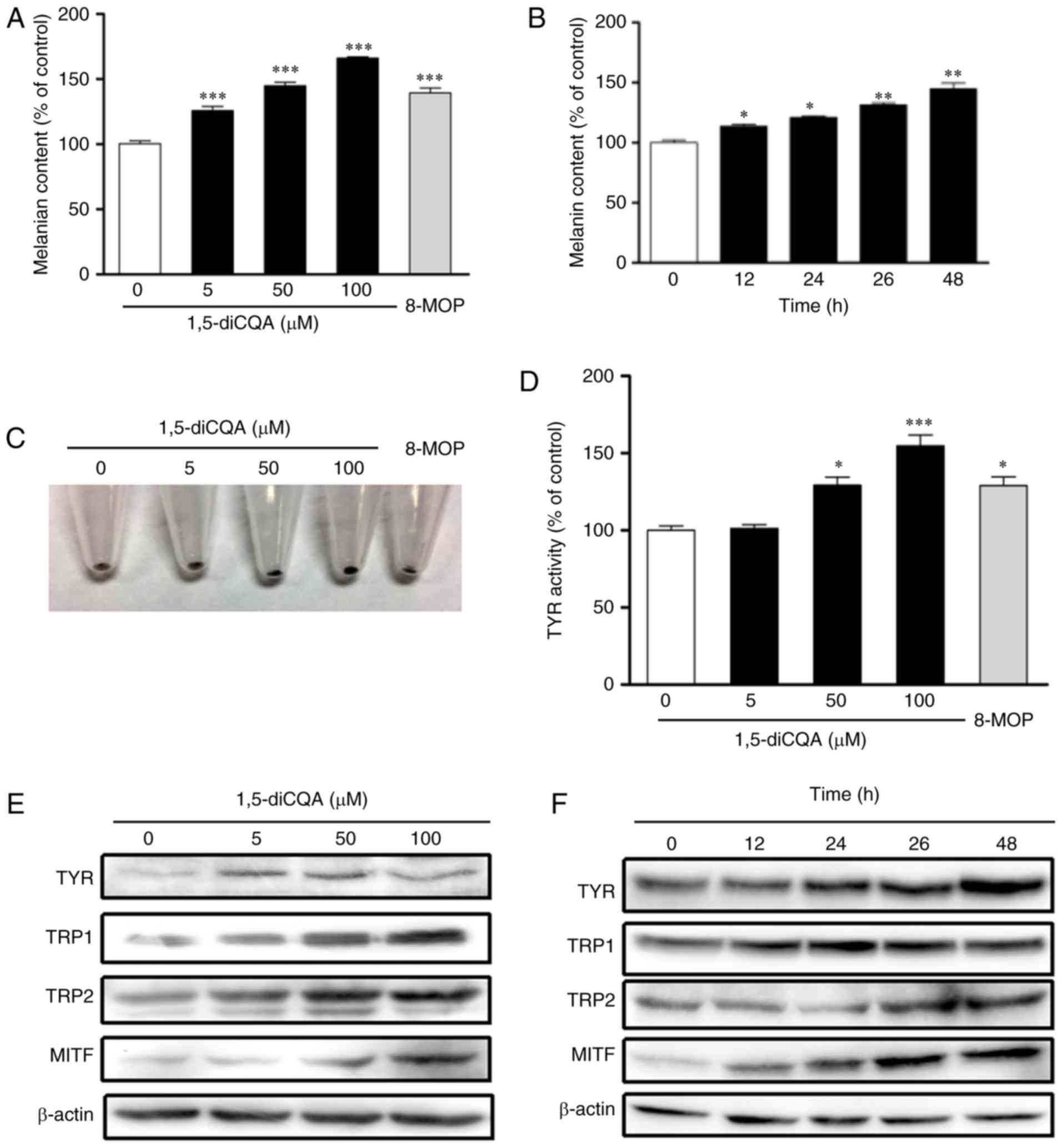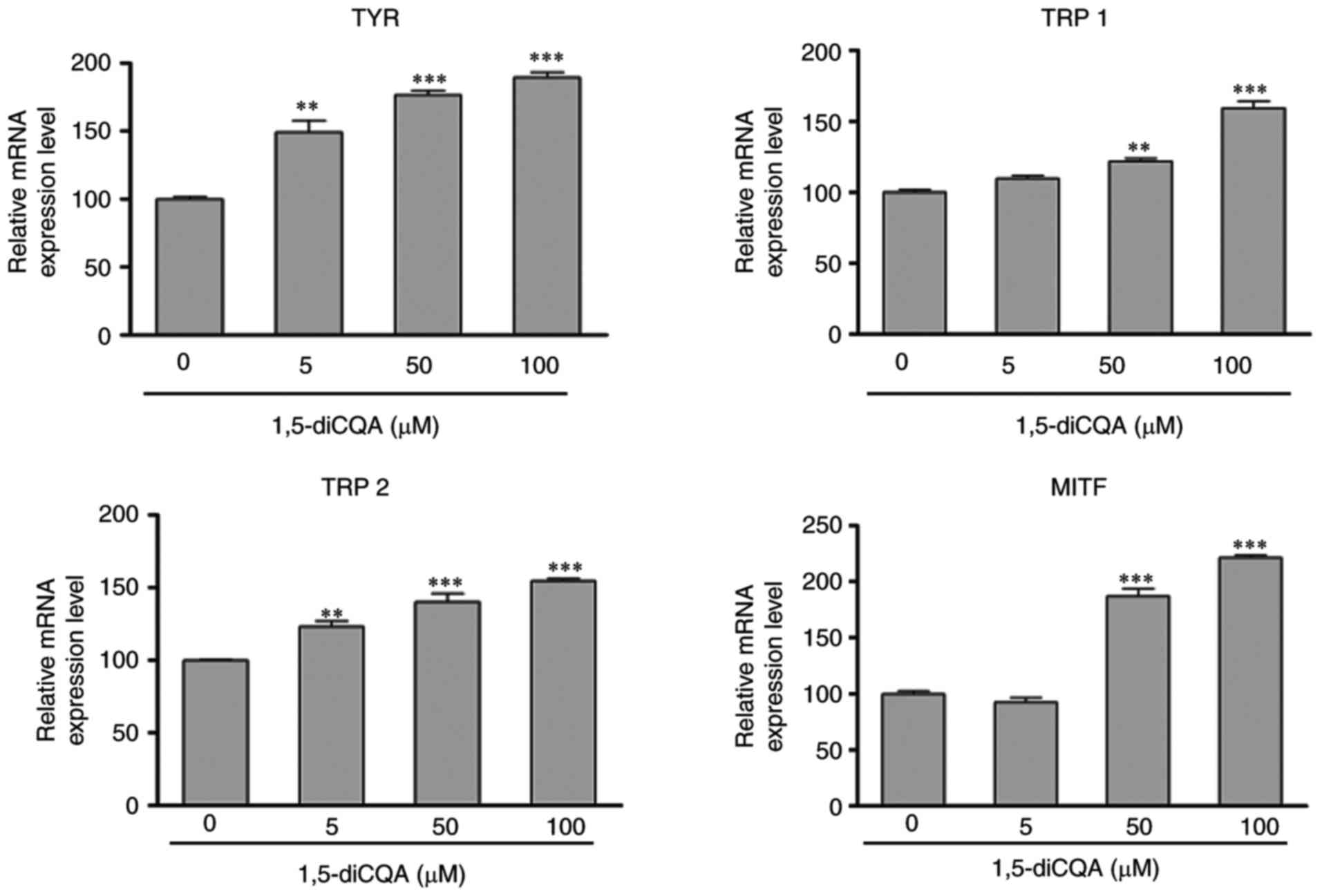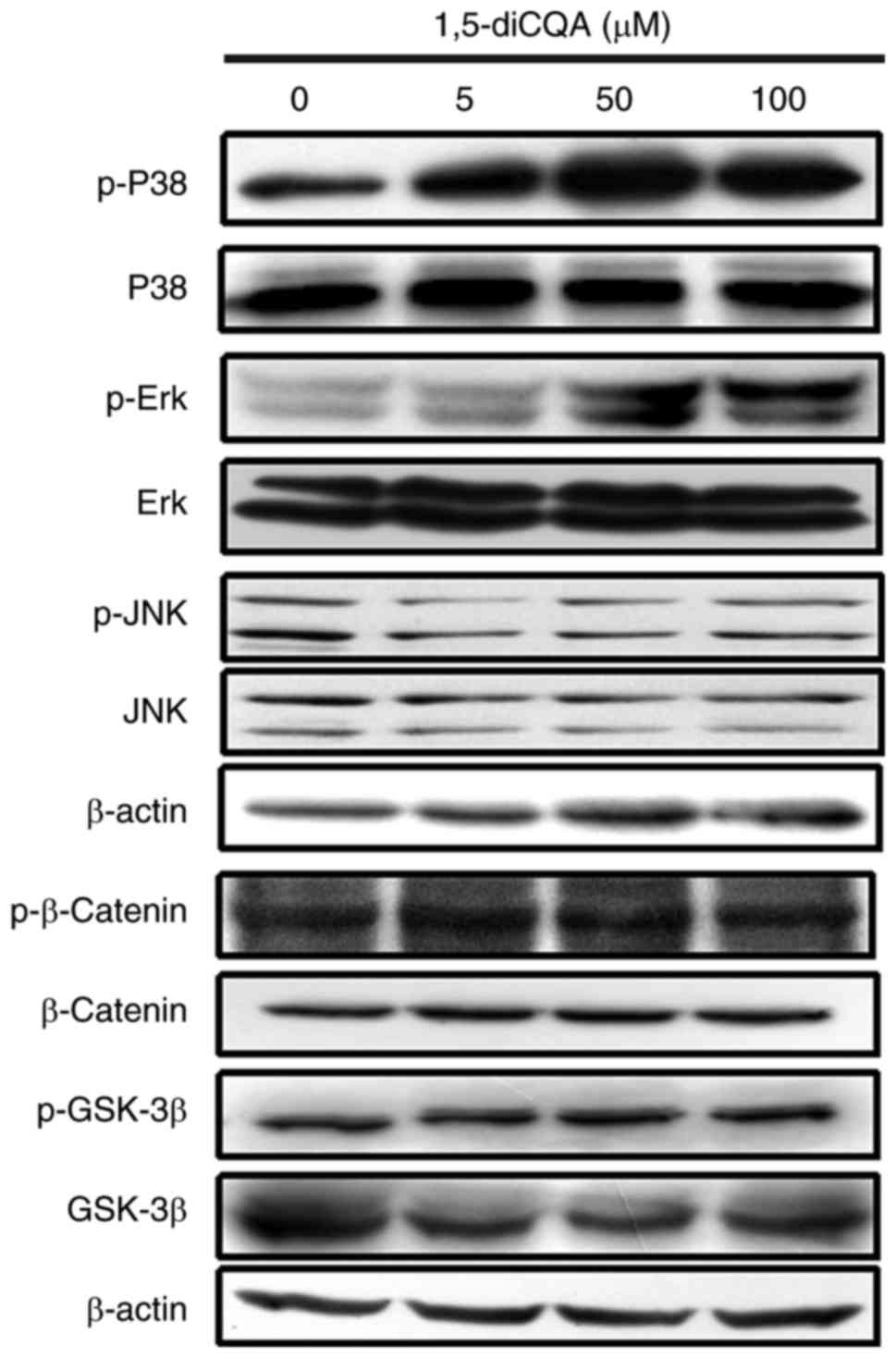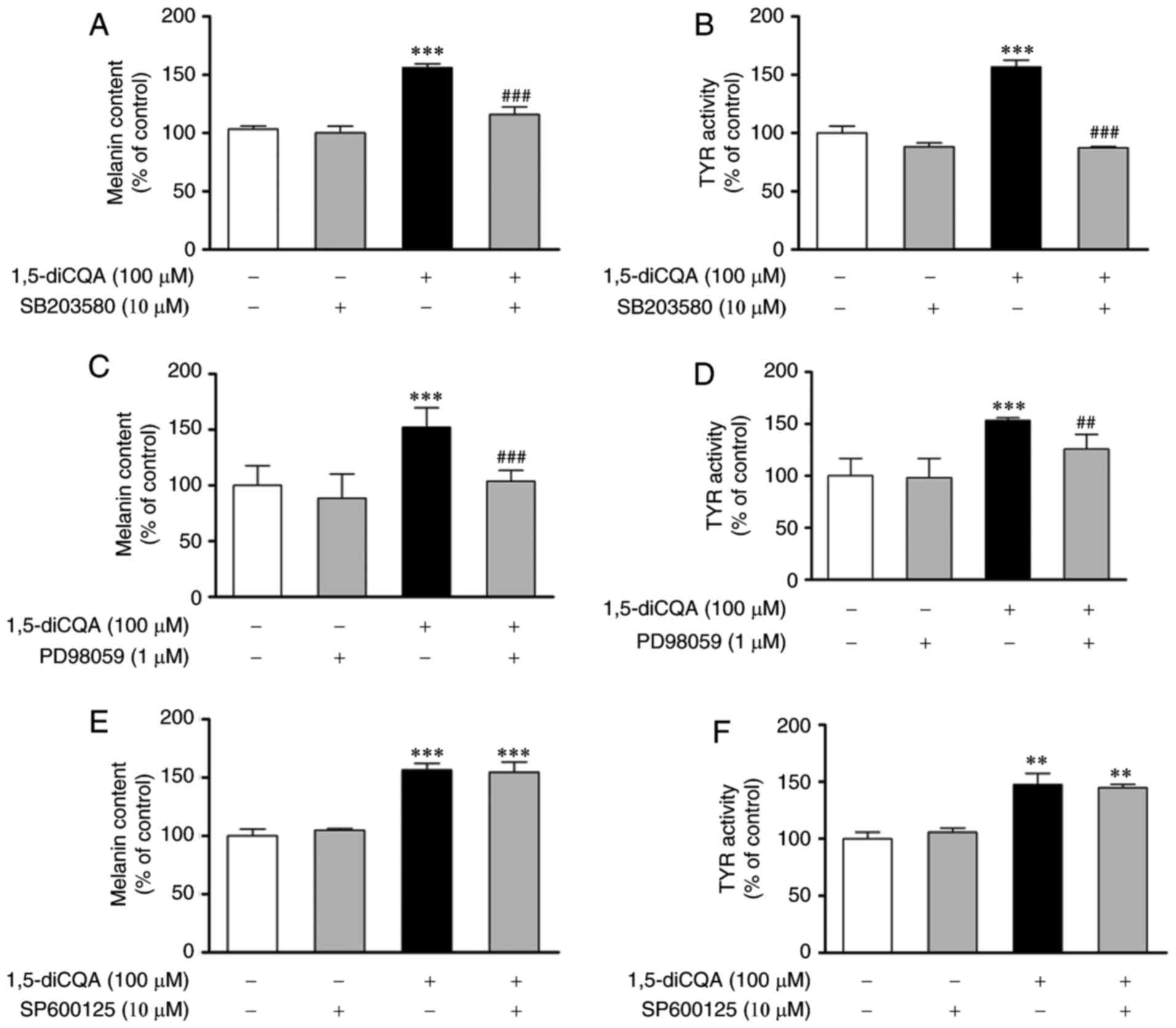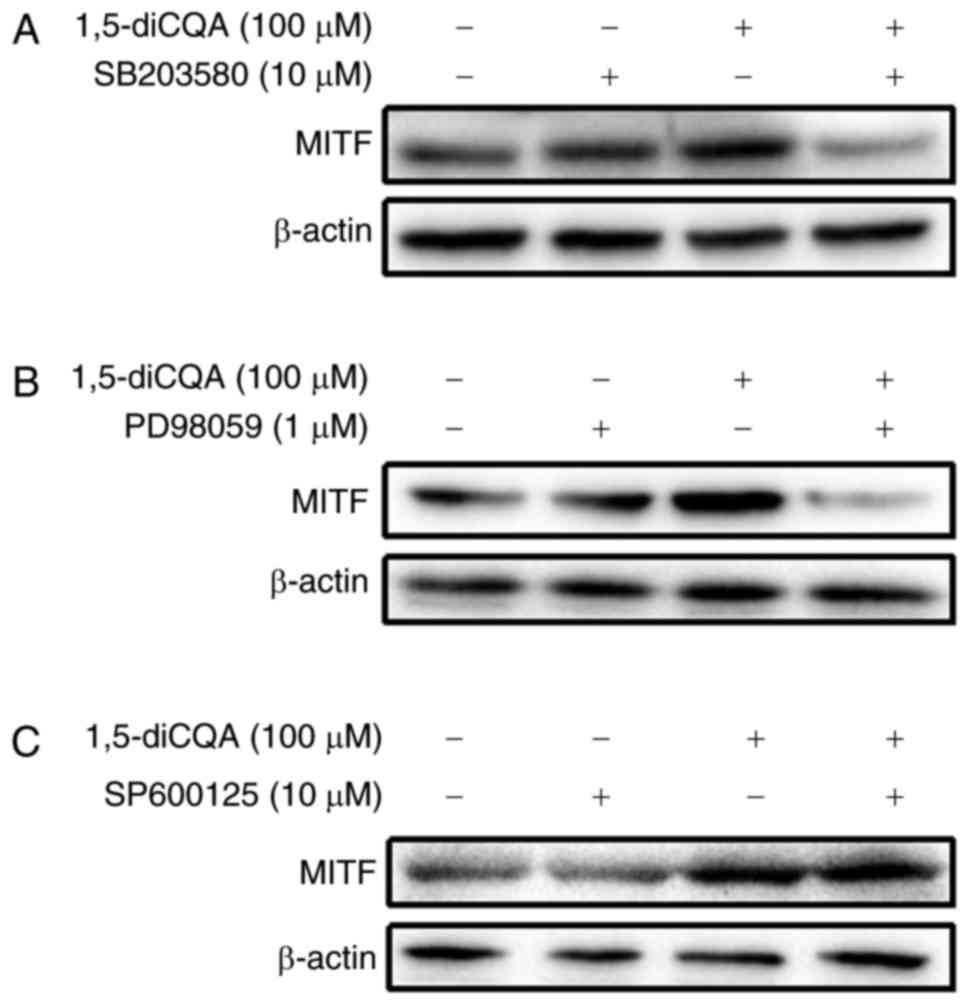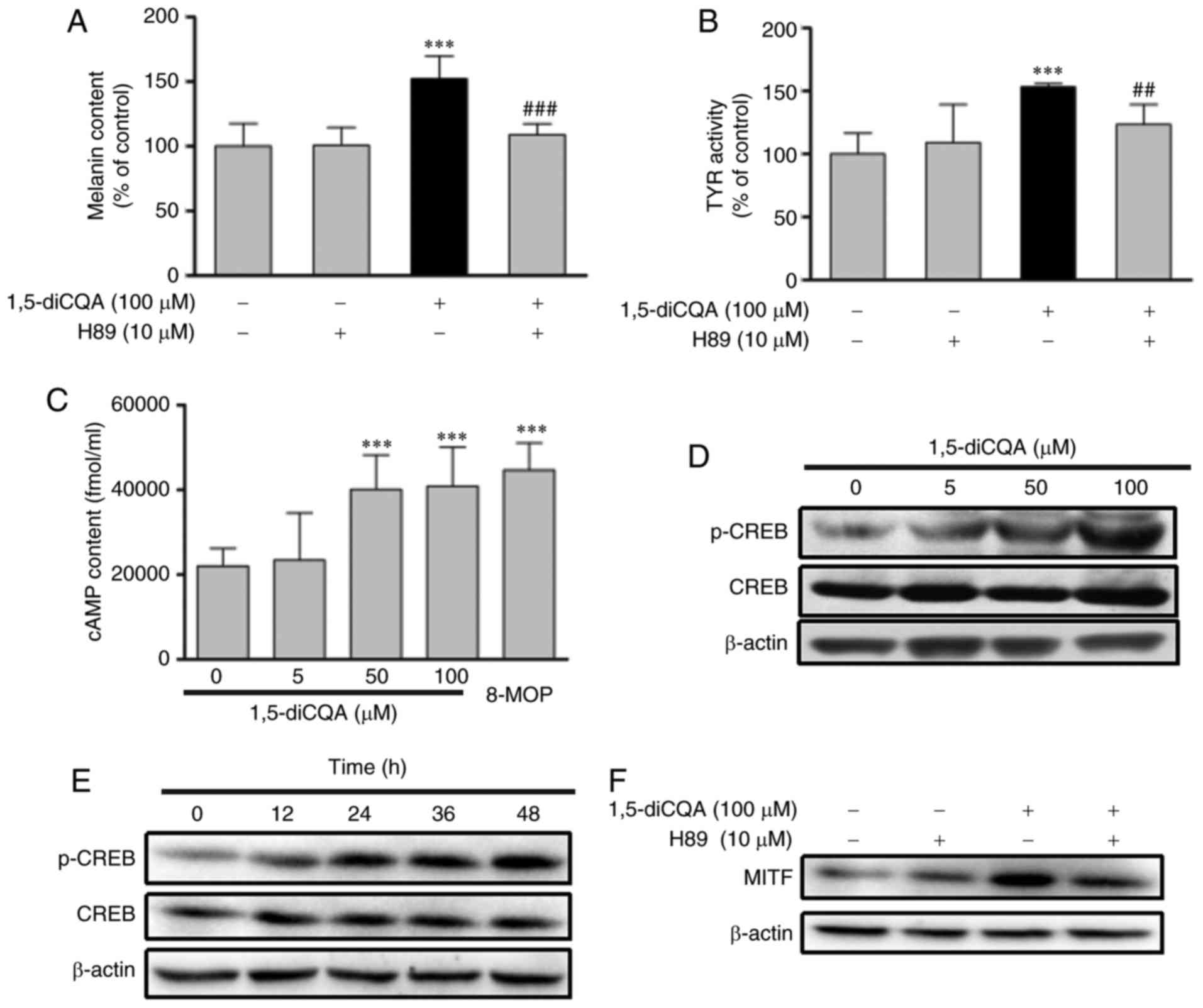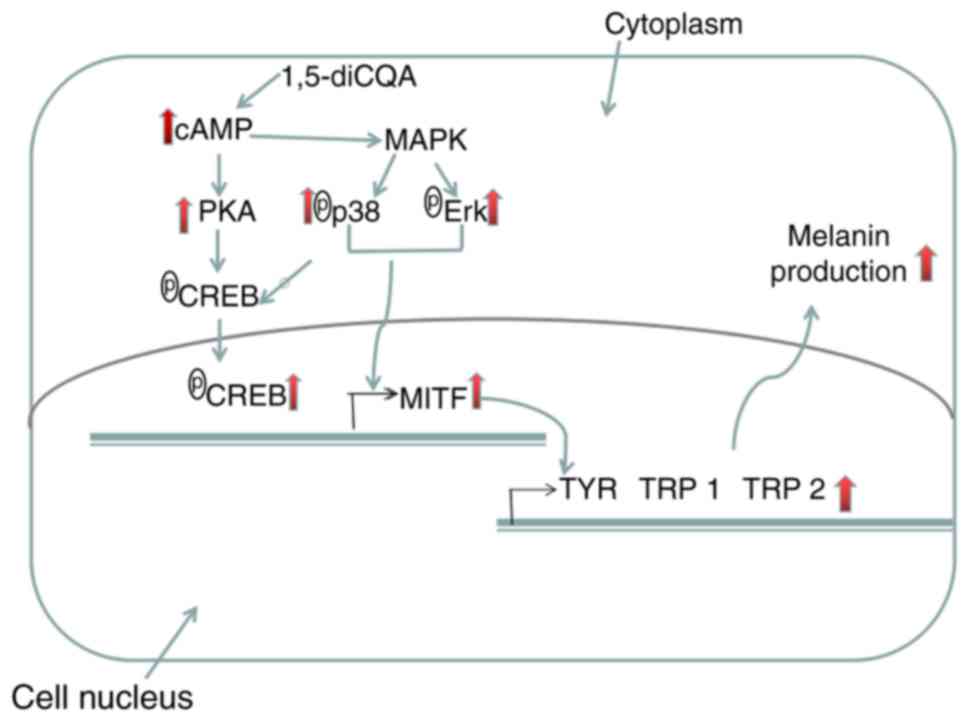|
1
|
Boniface K, Seneschal J, Picardo M and
Taïeb A: Vitiligo: Focus on clinical aspects, immunopathogenesis,
and therapy. Clin Rev Allergy Immunol. 54:52–67. 2018. View Article : Google Scholar
|
|
2
|
Schallreuter KU, Bahadoran P, Picardo M,
Slominski A, Elassiuty YE, Kemp EH, Giachino C, Liu JB, Luiten RM,
Lambe T, et al: Vitiligo pathogenesis: Autoimmune disease, genetic
defect, excessive reactive oxygen species, calcium imbalance, or
what else? Exp Dermatol. 17:139–140. 2008. View Article : Google Scholar : PubMed/NCBI
|
|
3
|
Gupta AK, Gover MD, Nouri K and Taylor S:
The treatment of melasma: A review of clinical trials. J Am Acad
Dermatol. 55:1048–1065. 2006. View Article : Google Scholar : PubMed/NCBI
|
|
4
|
Yamaguchi Y and Hearing VJ: Melanocytes
and their diseases. Cold Spring Harb Perspect Med. 4:a0170462014.
View Article : Google Scholar : PubMed/NCBI
|
|
5
|
Pillaiyar T, Manickam M and Jung SH:
Recent development of signaling pathways inhibitors of
melanogenesis. Cell Signal. 40:99–115. 2017. View Article : Google Scholar : PubMed/NCBI
|
|
6
|
Rad HH, Yamashita T, Jin HY, Hirosaki K,
Wakamatsu K, Ito S and Jimbow K: Tyrosinase-related proteins
suppress tyrosinase-mediated cell death of melanocytes and melanoma
cells. Exp Cell Res. 298:317–328. 2004. View Article : Google Scholar : PubMed/NCBI
|
|
7
|
Kim YJ and Uyama H: Tyrosinase inhibitors
from natural and synthetic sources: Structure, inhibition mechanism
and perspective for the future. Cell Mol Life Sci. 62:1707–1723.
2005. View Article : Google Scholar : PubMed/NCBI
|
|
8
|
Levy C, Khaled M and Fisher DE: MITF:
Master regulator of melanocyte development and melanoma oncogene.
Trends Mol Med. 12:406–414. 2006. View Article : Google Scholar : PubMed/NCBI
|
|
9
|
Niu C and Aisa HA: Upregulation of
melanogenesis and tyrosinase activity: Potential agents for
vitiligo. Molecules. 22:E13032017. View Article : Google Scholar : PubMed/NCBI
|
|
10
|
Yamaguchi Y, Brenner M and Hearing VJ: The
regulation of skin pigmentation. J Biol Chem. 282:27557–27561.
2007. View Article : Google Scholar : PubMed/NCBI
|
|
11
|
Gu WJ, Ma HJ, Zhao G, Yuan XY, Zhang P,
Liu W, Ma LJ and Lei XB: Additive effect of heat on the UVB-induced
tyrosinase activation and melanogenesis via ERK/p38/MITF pathway in
human epidermal melanocytes. Arch Dermatol Res. 306:583–590. 2014.
View Article : Google Scholar : PubMed/NCBI
|
|
12
|
Buscà R and Ballotti R: Cyclic AMP a key
messenger in the regulation of skin pigmentation. Pigment Cell Res.
13:60–69. 2000. View Article : Google Scholar : PubMed/NCBI
|
|
13
|
Schepsky A, Bruser K, Gunnarsson GJ,
Goodall J, Hallsson JH, Goding CR, Steingrimsson E and Hecht A: The
microph-thalmia-associated transcription factor Mitf interacts with
beta-catenin to determine target gene expression. Mol Cell Biol.
26:8914–8927. 2006. View Article : Google Scholar : PubMed/NCBI
|
|
14
|
Lin R and Chen YL: Compositae. Flora of
China. 4. Science Press; Beijing: pp. 5–8. 1985
|
|
15
|
Jamil S, Khan RA, Ahmed S and Fatima S:
Evaluation of anti-inflammatory and anti-oxidant potential of seed
extracts o Vernonia anthelmintica. Pak J Pharm Sci. 30:755–760.
2017.PubMed/NCBI
|
|
16
|
Tuerxuntayi A, Liu YQ, Tulake A, Kabas M,
Eblimit A and Aisa HA: Kaliziri extract upregulates tyrosinase,
TRP-1, TRP-2 and MITF expression in murine B16 melanoma cells. BMC
Complement Altern Med. 14:1662014. View Article : Google Scholar : PubMed/NCBI
|
|
17
|
Yang B, Meng Z, Dong J, Yan L, Zou L, Tang
Z and Dou G: Metabolic profile of 1,5-dicaffeoylquinic acid in
rats, an in vivo and in vitro study. Drug Metab Dispos. 33:930–936.
2005. View Article : Google Scholar : PubMed/NCBI
|
|
18
|
McDougall B, King PJ, Wu BW, Hostomsky Z,
Reinecke MG and Robinson WE Jr: Dicaffeoylquinic and
dicaffeoyltartaric acids are selective inhibitors of human
immunodeficiency virus type 1 integrase. Antimicrob Agents
Chemother. 42:140–146. 1998. View Article : Google Scholar : PubMed/NCBI
|
|
19
|
Cao X, Xiao H, Zhang Y, Zou L, Chu Y and
Chu X: 1-5-Dicaffeoylquinic acid-mediated glutathione synthesis
through activation of Nrf2 protects against
OGD/reper-fusion-induced oxidative stress in astrocytes. Brain Res.
1347:142–148. 2010. View Article : Google Scholar : PubMed/NCBI
|
|
20
|
Xiao HB, Cao X, Wang L, Run XQ, Su Y, Tian
C, Sun SG and Liang ZH: 1-5-dicaffeoylquinic acid protects primary
neurons from amyloid β 1-42-induced apoptosis via PI3K/Akt
signaling pathway. Chin Med J (Engl). 124:2628–2635. 2011.
|
|
21
|
Zheng Z, Wang X, Liu P, Li M, Dong H and
Qiao X: Semi-preparative separation of 10 caffeoylquinic acid
derivatives using high speed counter-current chromatogaphy combined
with semi-preparative HPLC from the roots of burdock (Arctium lappa
L.). Molecules. 23:E4292018. View Article : Google Scholar : PubMed/NCBI
|
|
22
|
Park SY, Jin ML, Kim YH, Kim Y and Lee SJ:
Aromatic-turmerone inhibits α-MSH and IBMX-induced melanogenesis by
inactivating CREB and MITF signaling pathways. Arch Dermatol Res.
303:737–744. 2011. View Article : Google Scholar : PubMed/NCBI
|
|
23
|
Zhou J, Ren T1, Li Y, Cheng A, Xie W, Xu
L, Peng L, Lin J, Lian L, Diao Y, et al: Oleoylethanolamide
inhibits α-melanocyte stimulating hormone-stimulated melanogenesis
via ERK, Akt and CREB signaling pathways in B16 melanoma cells.
Oncotarget. 8:56868–56879. 2017.PubMed/NCBI
|
|
24
|
Hout DR, Schweitzer BL, Lawrence K, Morris
SW, Tucker T, Mazzola R, Skelton R, McMahon F, Handshoe J,
Lesperance M, et al: Performance of a RT-PCR assay in comparison to
fish and immunohistochemistry for the detection of ALK in non-small
cell lung cancer. Cancers (Basel). 9:E992017. View Article : Google Scholar
|
|
25
|
Zhu PY, Yin WH, Wang MR, Dang YY and Ye
XY: Andrographolide suppresses melanin synthesis through
Akt/GSK3β/β-catenin signal pathway. J Dermatol Sci. 79:74–83. 2015.
View Article : Google Scholar : PubMed/NCBI
|
|
26
|
Zheng MF, Shen SY and Huang WD: DCA
increases the antitumor effects of capecitabine in a mouse B16
melanoma allograft and a human non-small cell lung cancer A549
xenograft. Cancer Chemother Pharmacol. 72:1031–1041. 2013.
View Article : Google Scholar : PubMed/NCBI
|
|
27
|
Livak KJ and Schmittgen TD: Analysis of
relative gene expression data using real-time quantitative PCR and
the 2(-Delta Delta C(T)) method. Methods. 25:402–428. 2001.
View Article : Google Scholar
|
|
28
|
Lu XY, Li JQ, Liu XN, Li XB and Ma J:
Characterization and expression analysis of six chitinase genes
from the desert beetle microdera punctipennis in response to low
temperature. Cryo Letters. 35:438–448. 2014.PubMed/NCBI
|
|
29
|
Smit NP, Kolb RM, Lentjes EG, Noz KC, van
der Meulen H, Koerten HK, Vermeer BJ and Pavel S: Variations in
melanin formation by cultured melanocytes from different skin
types. Arch Dermatol Res. 290:342–349. 1998. View Article : Google Scholar : PubMed/NCBI
|
|
30
|
Ramsden CA and Riley PA: Tyrosinase: The
four oxidation states of the active site and their relevance to
enzymatic activation, oxidation and inactivation. Bioorg Med Chem.
22:2388–2395. 2014. View Article : Google Scholar : PubMed/NCBI
|
|
31
|
Shen T, Heo SI and Wang MH: Involvement of
the p38 MAPK and ERK signaling pathway in the anti-melanogenic
effect of methyl 3,5-dicaffeoyl quinate in B16F10 mouse melanoma
cells. Chem Biol Interact. 199:106–111. 2012. View Article : Google Scholar : PubMed/NCBI
|
|
32
|
Hart MJ, de los Santos R, Albert IN,
Rubinfeld B and Polakis P: Downregulation of beta-catenin by human
axin and its association with the APC tumor suppressor,
beta-catenin and GSK3 beta. Curr Biol. 8:573–581. 1998. View Article : Google Scholar : PubMed/NCBI
|
|
33
|
Kim DS, Cha SB, Park MC, Park SA, Kim HS,
Woo WH and Mun YJ: Scopoletin stimulates melanogenesis via cAMP/PKA
pathway and partially p38 activation. Biol Pharm Bull.
14:2068–2074. 2017. View Article : Google Scholar
|
|
34
|
Kaidbey KH, Agin PP, Sayre RM and Kligman
AM: Kligman, hotoprotection by melanin-a comparison of black and
caucasian skin. J Am Acad Dermatol. 1:249–260. 1979. View Article : Google Scholar : PubMed/NCBI
|
|
35
|
Sato K, Ando R, Kobayashi H and Nishio T:
2-Ethoxybenzamide stimulates melanin synthesis in B16F1 melanoma
cells via the CREB signaling pathway. Mol Cell Biochem. 423:39–52.
2016. View Article : Google Scholar : PubMed/NCBI
|
|
36
|
Lee KM, Lee KY, Choi HW, Cho MY, Kwon TH,
Kawabata S and Lee BL: Activated phenoloxidase from Tenebrio
molitor larvae enhances the synthesis of melanin by using a
vitellogenin-like protein in the presence of dopamine. Eur J
Biochem. 267:3695–3703. 2000. View Article : Google Scholar : PubMed/NCBI
|
|
37
|
Kumar R, Parsad D, Rani S, Bhardwaj S and
Srivastav N: Glabrous lesional stem cells differentiated into
functional mela-nocytes: New hope for repigmentation. J Eur Acad
Dermatol Venereol. 30:1555–1560. 2016. View Article : Google Scholar : PubMed/NCBI
|
|
38
|
Maimaiti Z, Turak A and Aisa HA: Two new
compounds from the seeds o Vernonia anthelmintica. J Asian Nat Prod
Res. 19:862–868. 2017. View Article : Google Scholar
|
|
39
|
Turak A and Aisa HA: Three new
elemanolides from the seeds o Vernonia anthelmintica. J Asian Nat
Prod Res. 20:313–320. 2018. View Article : Google Scholar
|
|
40
|
Kim HJ, Kim JS, Woo JT, Lee IS and Cha BY:
Hyperpigmentation mechanism of methyl 3,5-dicaffeoylquinate through
activation of p38 andMITF induction of tyrosinase. Acta Biochim
Biophys Sin (Shanghai). 47:548–556. 2015. View Article : Google Scholar
|
|
41
|
Mamat N, Dou J, Lu X, Eblimit A and Haji
Akber A: Isochlorogenic acid A promotes melanin synthesis in B16
cell through the β-catenin signal pathway. Acta Biochim Biophys Sin
(Shanghai). 49:800–807. 2017. View Article : Google Scholar
|
|
42
|
Pei T, Zheng C, Huang C, Chen X, Guo Z, Fu
Y, Liu J and Wang Y: Systematic understanding the mechanisms of
vitiligo pathogenesis and its treatment by Qubaibabuqi formula. J
Ethnopharmacol. 190:272–287. 2016. View Article : Google Scholar : PubMed/NCBI
|
|
43
|
Ahn JH, Jin SH and Kang HY: LPS induces
melanogenesis through p38 MAPK activation in human melanocytes.
Arch Dermatol Res. 300:325–329. 2008. View Article : Google Scholar : PubMed/NCBI
|
|
44
|
Yanase H, Ando H, Horikawa M, Watanabe M,
Mori T and Matsuda N: Possible involvement of ERK 1/2 in
UVA-induced melanogenesis in cultured normal human epidermal
melanocytes. Pigment Cell Res. 14:103–109. 2001. View Article : Google Scholar : PubMed/NCBI
|
|
45
|
Buscà R, Abbe P, Mantoux F, Aberdam E,
Peyssonnaux C, Eychène A, Ortonne JP and Ballotti R: Ras mediates
the cAMP-dependent activation of extracellular signal-regulated
kinases (ERKs) in melanocytes. EMBO J. 19:2900–2910. 2000.
View Article : Google Scholar : PubMed/NCBI
|
|
46
|
Jung HG, Kim HH, Paul S, Jang JY, Cho YH,
Kim HJ, Yu JM, Lee ES, An BJ, Kang SC and Bang BH: Quercetin
-3-O-β-D-g lucopyranosyl-(1→6)-β-D-glucopyranoside suppresses
melanin synthesis by augmenting p38 MAPK and CREB signaling
pathways and subsequent cAMP down-regulation in murine melanoma
cells. Saudi J Biol Sci. 22:706–713. 2015. View Article : Google Scholar : PubMed/NCBI
|















